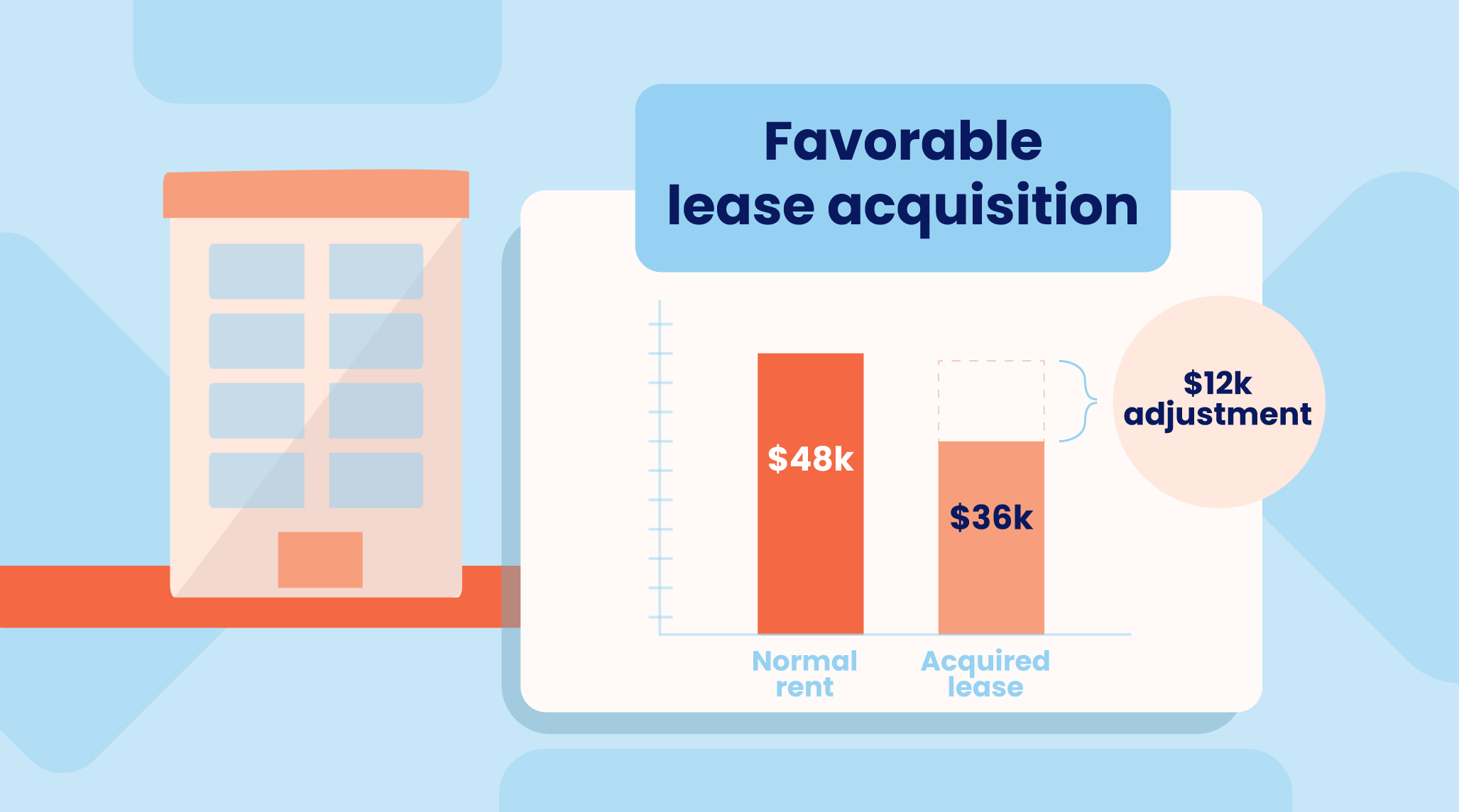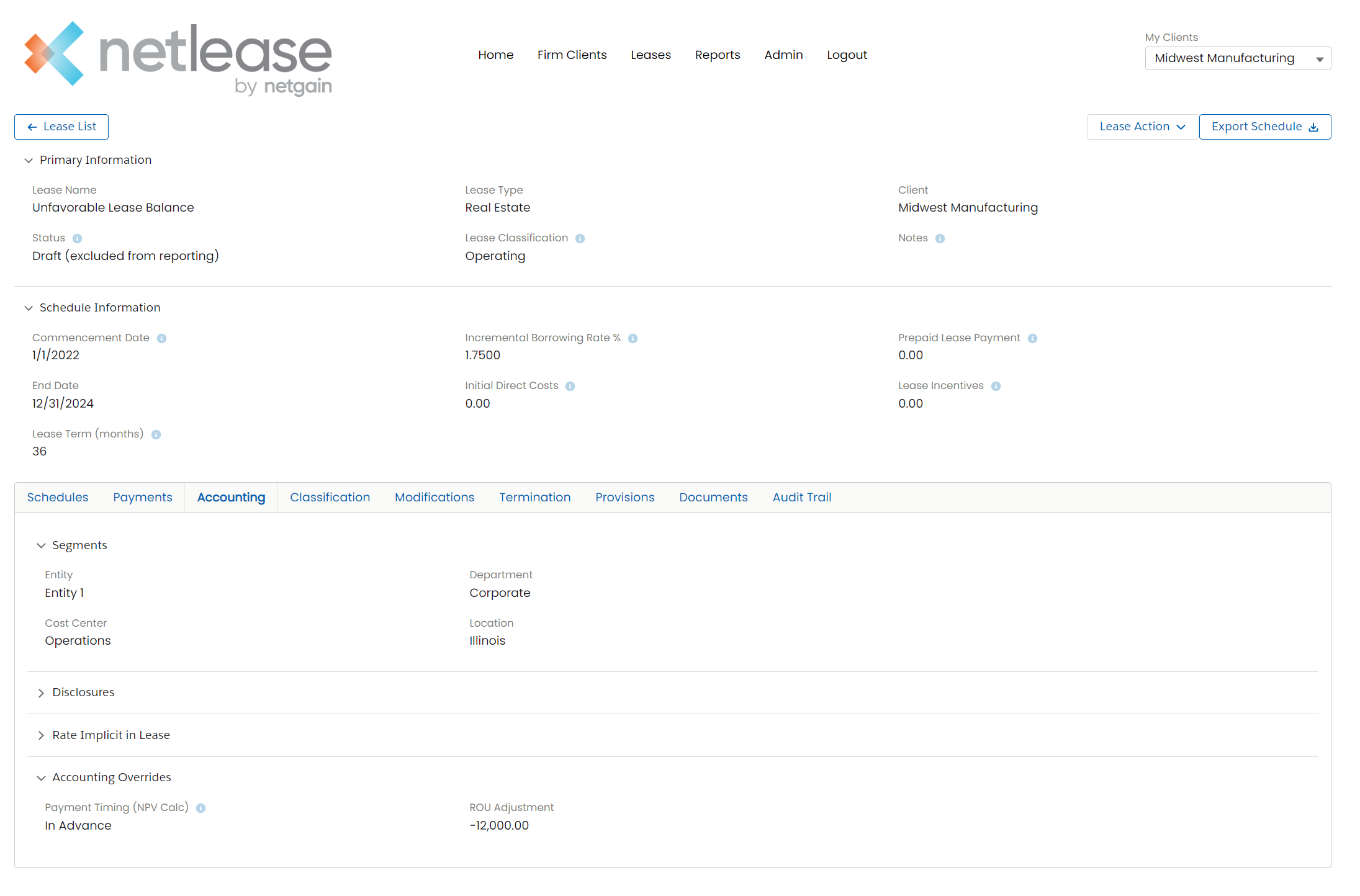NetLease - Leases from Business Combinations
What happens to leases when businesses combine?
When a business is sold to another business, the acquiring business needs to allocate the amount they paid for the company to the individual assets and liabilities included in the business being purchased. Any amount left over is then put toward an account called “Goodwill,” which, basically, is made up of the value of a business that isn’t a specific identifiable asset (e.g., brand recognition).
When a lease is included in a purchase of another business, how should the purchase price be allocated to the lease?
For leases included in a business combination, the terms of that lease should be compared to market terms as of the date of the business combination. For example, Company A is purchasing Company B, and Company B has a lease of some office space at a rate of $36k per year. If this office space was rented out at the acquisition date, the market rent would be about $48k per year. There is value in acquiring this lease for the company because that lease is essentially worth $12k per year. This would be classified as a favorable lease, and there should be a portion of the purchase price of the transaction allocated to this lease.

Okay, great! How do I account for leases in a business combination?
Step 1: Gather lease terms for all leases (e.g., lease term, payment amounts, lease incentives).
Step 2: Gather market-based terms for the lease as of the date of the transaction. The important terms to gather are the lease payments and lease incentives that would be needed to secure a lease in the market as of the business combination date. (For example, for an office lease, look at current real estate listings in the area or research similar office space.)
Step 3: Using a discount rate, calculate the present value (PV) of the lease payments using both the actual terms and the estimated market terms.
Step 4: Calculate the difference between the PV of future lease payments for both scenarios. If the actual lease terms results in a higher PV, you have an unfavorable lease. If the market-based terms are higher, you have a favorable lease.
Step 5a (Favorable leases): When the acquired assets and liabilities are recognized in the acquiring company’s books, the lease liability is recorded at the PV of the contracted lease payments discounted at the new IBR. The ROU asset is equal to the lease liability value plus the difference between the PV of the market terms minus the PV of the contracted lease terms.
Step 5b (Unfavorable leases): Similar to step 5a, when the acquired assets and liabilities are recognized in the acquiring company’s books, the lease liability is recorded at the PV of the contracted lease payments discounted at the updated discount rate. The ROU asset is equal to the lease liability value minus the difference between the PV of the contracted terms and the PV of the market terms.
Step 6: Now that your ROU has been adjusted, account for the leases as you normally would under ASC 842, depending on the lease classification (single lease expense for operating leases and interest expense and ROU amortization for a finance lease). The adjustment made to the ROU asset will increase or decrease your lease expense to the market terms base rate, but your lease liability remains pegged to the actual lease payments to be made.
With NetLease, you can easily plug in the favorable/unfavorable difference into the ROU Adjustment field under the Accounting subtab and allow the system to do the rest. For a Favorable lease balance at the transition date, enter a positive value into the ROU Adjustment field to increase the ROU Asset. For an Unfavorable lease balance (see screenshot below), enter a negative value for a reduction of the ROU asset.

Relevant Accounting Guidance
ASC 805-20-25-12
Regardless of whether the acquiree is the lessee or the lessor, the acquirer shall determine whether the terms of each of an acquiree’s operating leases are favorable or unfavorable compared with the market terms of leases of the same or similar items at the acquisition date. If the acquiree is a lessor, the acquirer shall recognize an intangible asset if the terms of an operating lease are favorable relative to market terms and a liability if the terms are unfavorable relative to market terms. If the acquiree is a lessee, the acquirer shall adjust the measurement of the acquired right-of-use asset for any favorable or unfavorable terms in accordance with paragraph 805-20-30-24.
ASC 805-20-30-24
For leases in which the acquiree is a lessee, the acquirer shall measure the lease liability at the present value of the remaining lease payments, as if the acquired lease were a new lease of the acquirer at the acquisition date. The acquirer shall measure the right-of-use asset at the same amount as the lease liability as adjusted to reflect favorable or unfavorable terms of the lease when compared with market terms.
